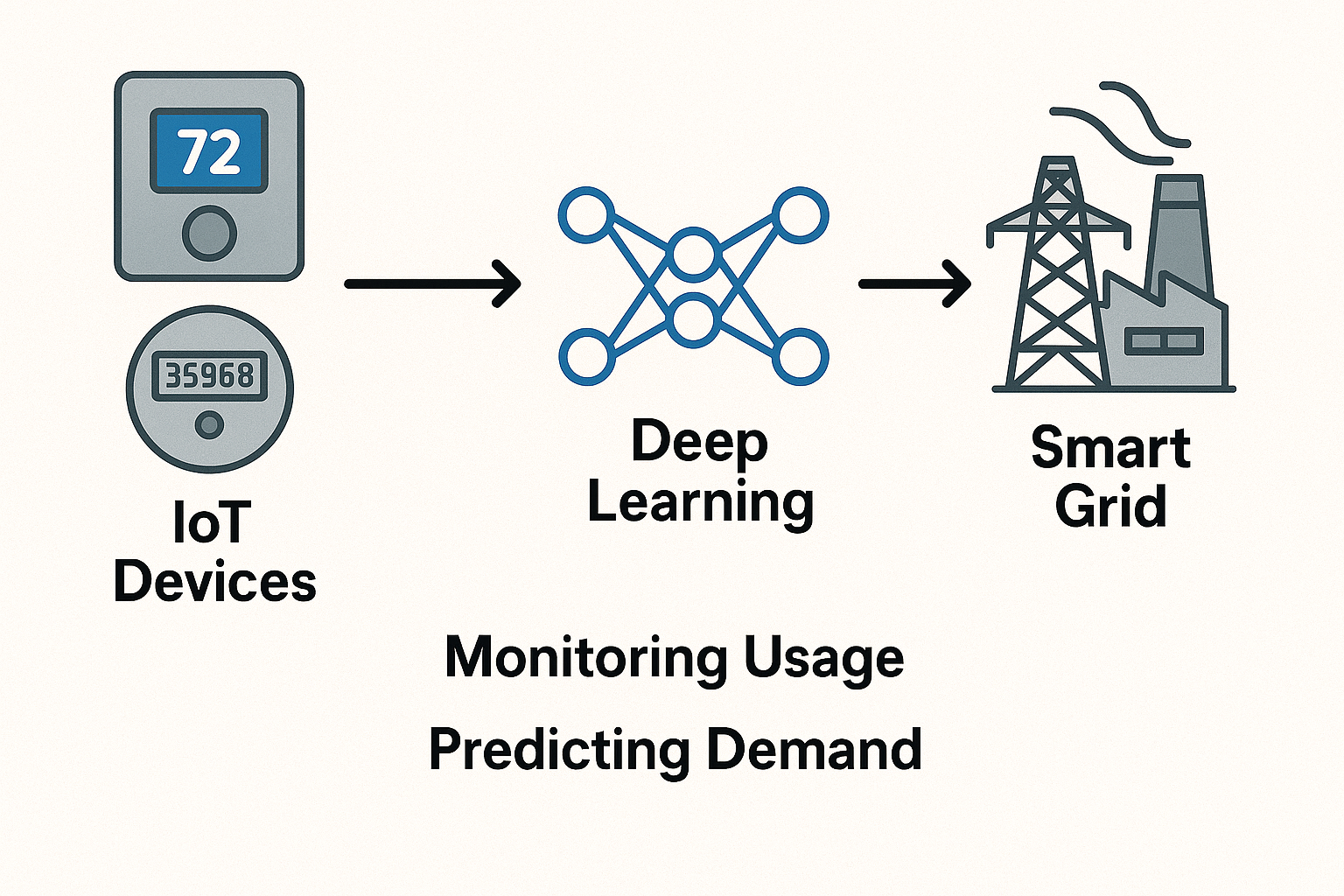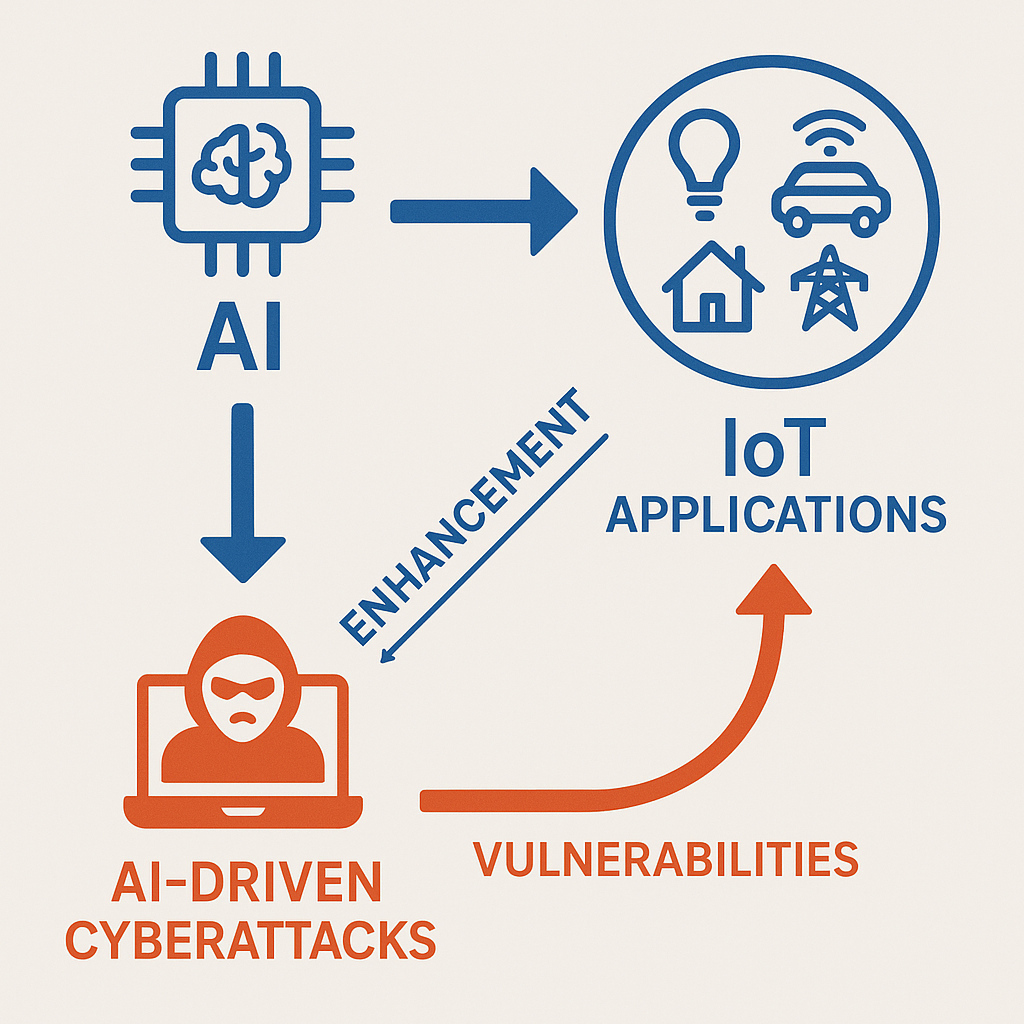Introduction: The IoT Explosion and Its Dark Side
In 2025, the Internet of Things (IoT) has woven itself into the fabric of our lives, with over 75 billion devices connecting everything from smart thermostats to city-wide traffic systems. These devices promise convenience, efficiency, and innovation—your fridge orders groceries, your car optimizes routes, and your city reduces energy waste. But there’s a shadow lurking beneath this interconnected utopia: security. As AI enhances IoT applications, making them smarter and more autonomous, it also amplifies the risks. Hackers can now exploit AI-powered IoT devices to launch devastating attacks, from hijacking smart homes to disrupting entire cities. Are we ready for the security challenges ahead, or are we building a house of cards that could collapse with a single breach? The stakes have never been higher, and the clock is ticking.
AI and IoT: A Powerful but Risky Partnership
AI is the brain that makes IoT devices truly intelligent. In 2025, deep learning models analyze IoT data to predict traffic patterns, optimize energy usage, and even detect health issues through wearable devices. For example, a smart city might use AI to process data from IoT sensors, reducing energy consumption by 20% through predictive load balancing. In healthcare, AI-powered IoT wearables can monitor a patient’s vitals in real time, alerting doctors to anomalies before they become emergencies. This partnership is transformative, but it’s also a double-edged sword. AI can be weaponized by attackers to exploit IoT vulnerabilities—think an AI-driven bot that learns to crack smart lock passwords faster than any human could. The more intelligent our IoT systems become, the more attractive they are to cybercriminals. Are we prepared for the fallout when AI and IoT collide in the wrong hands?

The Growing Threat: Why IoT Security Is a Ticking Time Bomb
IoT devices are notoriously insecure, and AI only amplifies the problem. First, the sheer scale of IoT networks creates a sprawling attack surface—each device is a potential entry point. In 2025, a single smart city might have millions of IoT devices, from traffic cameras to water sensors, all interconnected. A single breach could cascade into chaos, like a hacker shutting down a city’s power grid. Second, many IoT devices are resource-constrained, lacking the computational power for robust security measures like encryption or frequent updates. Third, AI introduces new attack vectors: adversarial AI can manipulate IoT data, tricking systems into making dangerous decisions (e.g., causing a smart thermostat to overheat a home). Real-world incidents in 2025—like the Mirai botnet reboot that hijacked thousands of IoT devices to disrupt a major city’s traffic system—show how vulnerable we are. Are we sleepwalking into a future where our smart devices become our worst enemies?

Advancements in IoT Security: Fighting Back with AI
The good news? AI isn’t just a threat—it’s also a powerful ally in securing IoT networks. In 2025, researchers are leveraging AI to bolster IoT security in innovative ways. Anomaly detection uses deep learning to identify unusual patterns in IoT data, flagging potential threats—like a smart lock being accessed at an odd hour. Predictive analytics can anticipate attacks by analyzing historical data, enabling proactive defenses. For example, a smart grid might use AI to predict and prevent a DDoS attack before it happens. Blockchain integration is another advancement, ensuring secure, tamper-proof communication between IoT devices. Companies like IBM are deploying AI-driven security solutions that reduce IoT breaches by 30%, but these technologies are still in their infancy. The question remains: can these advancements scale fast enough to outpace the growing threats, or are we playing catch-up in a game we can’t win?
The Future: A Race Between Innovation and Exploitation
Looking to 2030, the future of IoT security in the age of AI is a high-stakes race. On one side, AI could revolutionize IoT security, creating self-healing networks that detect and neutralize threats in real time. Imagine a smart city where IoT devices autonomously update their firmware, patch vulnerabilities, and share threat intelligence via a decentralized AI network. On the other side, hackers will likely use AI to launch more sophisticated attacks—think an AI that learns to mimic legitimate IoT traffic, bypassing even the best defenses. Governments and companies will need to collaborate on global standards, ensuring IoT devices are secure by design, not as an afterthought. But here’s the provocative thought: as AI makes IoT smarter, are we creating systems too complex for humans to control? If a city’s IoT network becomes a battleground for dueling AIs—one defending, one attacking—who will win, and at what cost?
Conclusion: Preparing for an Uncertain Future
IoT and AI are reshaping our world, but they’re also exposing us to unprecedented risks. In 2025, the security challenges of this partnership are a ticking time bomb—vulnerable devices, sophisticated attacks, and privacy concerns threaten to undermine the promise of smart cities and connected lives. While AI-driven advancements offer hope, they’re not a silver bullet. The future hinges on our ability to innovate faster than the threats evolve, balancing the benefits of AI and IoT with the need for robust security. As we march toward 2030, we must ask ourselves: are we ready for a world where our devices are as smart as they are vulnerable? The answer will determine whether the age of AI and IoT becomes a triumph of innovation—or a cautionary tale of exploitation.

Comments